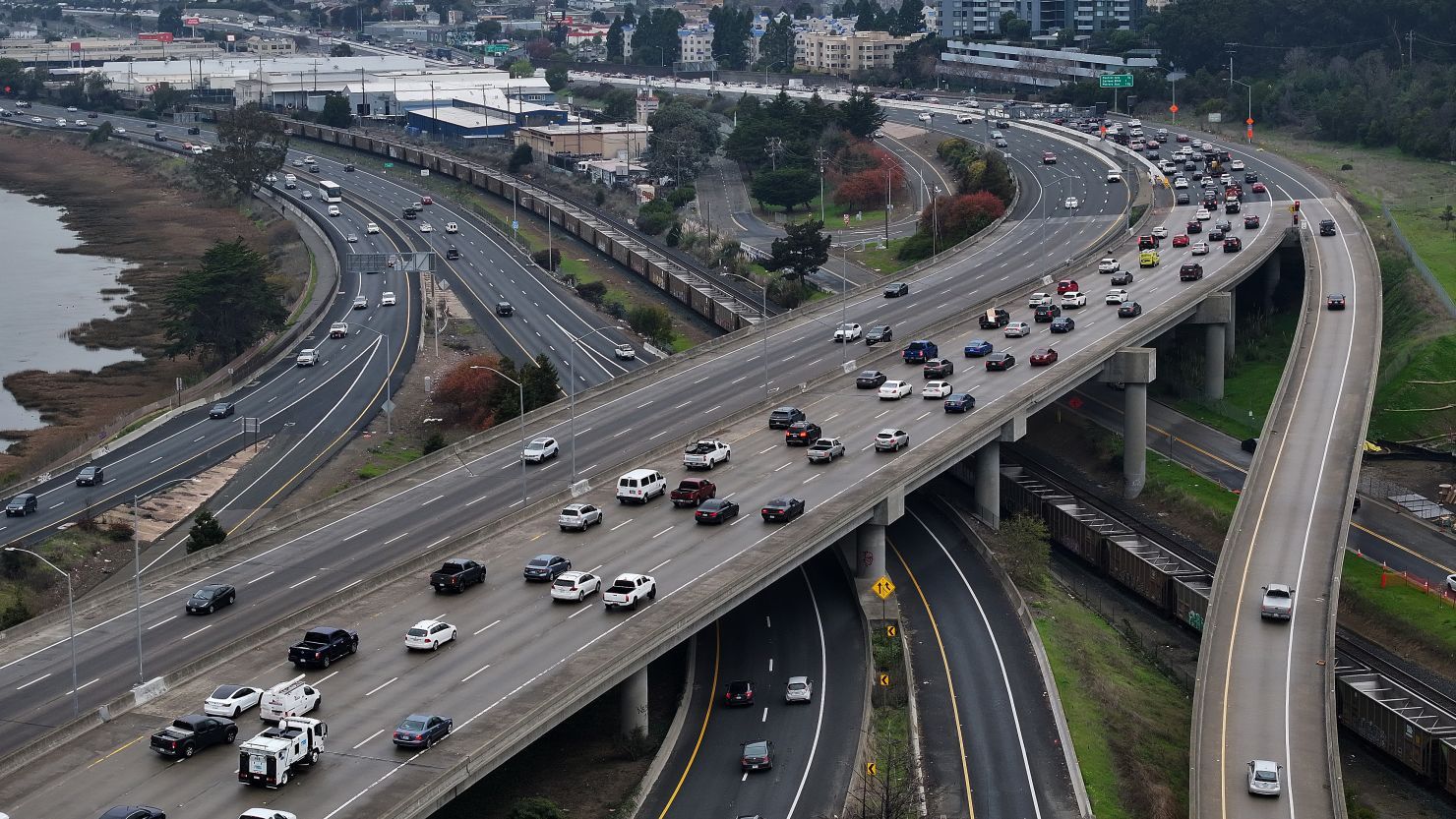 On January 16, 2024, Berkeley, California, USA, the car was driving on Interstate 80, with a bird's eye view. Justin Sullivan/Getty Photo Agency CNN
On January 16, 2024, Berkeley, California, USA, the car was driving on Interstate 80, with a bird's eye view. Justin Sullivan/Getty Photo Agency CNN Nowadays, this is high technology. Almost every new car sold in the past few years has sensors and cameras installed all over the body, including radar and sonar.
These sensors are dotted on the car body like small round buttons. Sometimes shiny black boxes are embedded in the grille, and things that look like camera lenses are installed behind the windshield near the rearview mirror.
This makes the maintenance process more complicated, because unlike damaged fenders, sensors or cameras cannot be directly bolted or welded back. In order to function, they need to be carefully and accurately aligned. It has greatly changed the process of collision repair.
"The changes we have seen in the past five years may be even greater than those we have seen in the past 50 years," said Todd Dylan, chief operating officer of Caliber Collision. Caliber Collision is one of the largest automobile body repair companies in the United States, with more than 1,700 offices in 41 states.
According to a study by consumer car group AAA, repairing sensors and cameras now accounts for more than one-third of the cost of repairing new cars after collision.
It should be noted that anyone, including AAA, does not recommend not getting these functions because of the maintenance cost. Systems such as automatic emergency braking, blind spot monitoring and rear cross traffic alarm can reduce your chances of having a car accident first. This is one of the reasons why automatic emergency braking is now almost universally used in new cars. In a few years, the United States will also need automatic emergency braking.
In addition to avoiding maintenance by reducing collisions, they also help to prevent injuries to passengers and pedestrians in the car. After all, this is much more important than sunken fenders.
Greg brannon, director of automotive engineering at the American Automobile Association, said that some of these systems can cut the accident rate by half.
"They won't stop everything," brannon said. "When you are in a car accident, there will be extra costs, so these things are a bit like' there is no such thing as a free lunch'."
These sensors and cameras can interact with the braking system of the vehicle, and sometimes with the steering system, so that the vehicle can stop or turn back to its own lane in an emergency. Most commonly, they will issue warning sounds, warning lights and warning graphics on the internal screen of vehicles to warn drivers of potentially dangerous cars, pedestrians or objects.
In a car crash, these sensors and cameras may be damaged or knocked out of alignment. In either case, the sensor is useless, or it will lead to unstable operation of the system.
Hami Ibrahimi, chief commercial officer of Caliber, said, "You are changing the image of sensors in the world."
Even a small dislocation can lead to a great change in the position of another car or obstacle.
Every car is different.
Although these sensors and cameras may need to be calibrated and recalibrated after any collision, what makes this task more difficult is that each automobile manufacturer may have different maintenance processes. Even different models can have different methods and may require different equipment.
Ibrahimi said: "Even if it is the same manufacturer, sometimes even the same model, the recalibration procedure varies according to the system type of the automobile system and the specific vehicle."
Some vehicles need "dynamic calibration", which means that once the sensors and cameras are restored to their original positions, the driver needs to drive the vehicle to the real road for testing. By installing appropriate equipment, cars can self-calibrate when observing lane lines and other signs. It requires cars to travel a certain distance at a certain speed, but the weather and traffic may cause problems.
"If you are in Chicago or Los Angeles, good luck to reach that speed," Ibrahimi said. "Or if you are in Seattle or Chicago or new york, good luck to see all the road signs in the case of snow."
More commonly, vehicles need "static calibration", which can be done in a closed workshop with machines. According to the instructions of the vehicle manufacturer, set special targets at a set distance around the vehicle.
"Cars [observe] these targets at these specific distances to recalibrate the world in their computers," Ibrahimi said.
Not just the material cost.
These types of restoration also require buildings to have open spaces that meet the requirements of specific colors and lighting. He said that this recalibration requires special training for employees.
With the rapid change of the industry, there is a great shortage of qualified automobile body maintenance technicians, just like the engine maintenance industry. Dylan said that this has also led to the upward pressure on salaries in this industry, because technicians must have high qualifications and education levels. Of course, this is good for people who work in this industry, but it is even more difficult for those who pay and the insurance companies who pay the repair fees in turn.
Mike Bunda, director of Allstate's automobile maintenance network, said that even within the insurance industry, the work of claim adjusters has become much more complicated.
"We have invested a lot of money in training and development, more than ever before," he said.
Claim mediators usually come from the collision repair industry, and they need to know all the nuances involved in repairing these automatic systems and sensors.
"These annual trainings are more quarterly and' on demand'. Really, they start now," Bundra said.